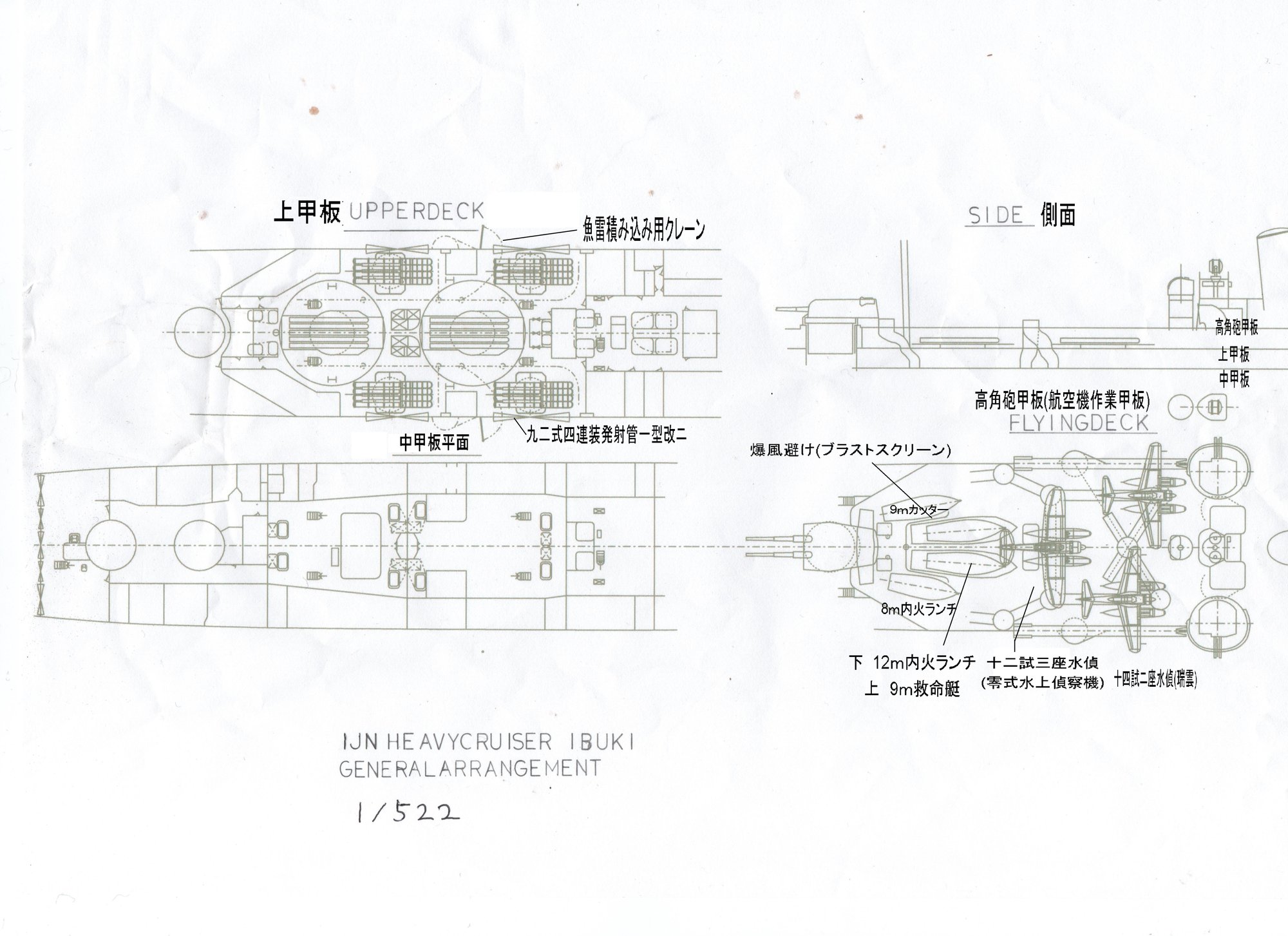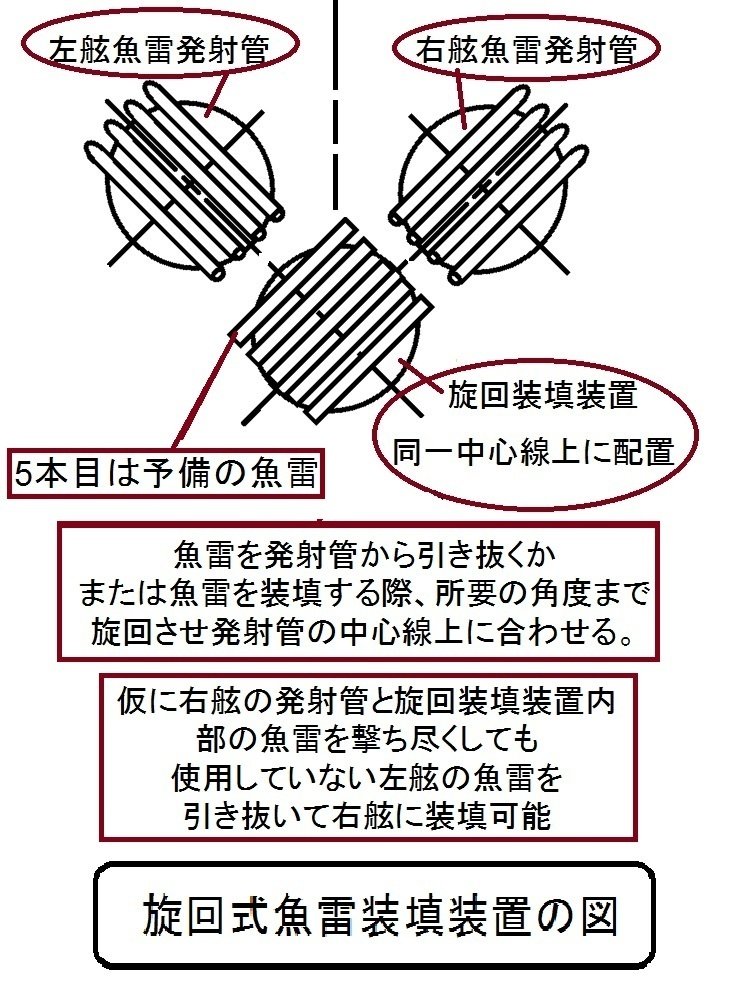- Yes I would like to see this ship added to the game
- Maybe
- Unsure
- I don’t think she should be added to the game
(Due to a lack of information from many sources this will primarily relying on wiki sources, additionally well as due to the fact that these ships were known to be similar to their predecessors and since the ship was never completed as a cruiser some images of the ship will be substituted with the images of Mogami class ships)
Background & History
The Ibuki class was planned pair of Heavy cruisers that were designed as improvements over the Mogami Heavy cruiser refit design, the main battery itself would stay the same in terms of gun in the form of primary, secondary, as well as the AA count (Note: if the ships were completed before the war ended the likelihood of the AA count would have undoubtedly increase significantly in terms of 25mm guns) count but the ships were to however in one area of design that change when it came to weaponry is that compared to their predecessors i.e. the Tone and Mogami class ships the Ibuki class would use quad torpedo launchers in the same positions as the Mogami class, additionally one sources seems to indicate that the ships would have used the improved 8" inch gun turrets that were found on the Tone class cruisers.
These of course would use the long lance torpedos and like their predecessors they would carry reloads onboard, 16 of them would be located in the torpedo tubes while another 8 would be found in reserve making it a total of 24, as for why the number in total did not increase is probably due to the fact their are a improved design rather than a entirely new design, one last note was that during the building a purposed change to the torpedo layout where the ship would have quintuple torpedo tubes i.e. torpedo tubes that are cable of being carrying 5 torpedos in total, these would have been placed with with 1 on each side of the ship and a third on the centerline of the ship but this was never implemented as a change. Their design would have made them heavier than the Mogami class ships however their designed beam and length were slightly shorter than that of their predecessors however as a result of the extra weight their draft was slightly greater. The design speed of the ships would have been on par with the speed of their predecessor in terms of being heavy cruisers however one sources indicates is that since they had their inner propeller shafts and boilers removed in which more fuel was added in their place which would have resulted in a speed far inferior of their sister while Ibuki was under carrier conversion. As for the Armor of the ships they would have been similar to the Mogami class however the ships would have had their waterline belt armor extended down all the way down to the double bottom, this armor was extended to the point where it covered both the front magazines as well as the aft magazines and this piece of armor was angled at a 20° angle inwards, the ships would have also include armor for the barbets with would have ranged from 25 to 100mm of armor, additionally the hoist for the secondary ammo was now protected with 75 to 100mm of armor, as for the rest of the armor the deck armor ranged from 35 to 40mm of armor on the flat with 60mm on the slopes, the armor over the machinery spaces would have been the same 100mm of armor with 30mm of armor place below the 100mm plates, the 105mm armor plates that separate the machinery spaces of the Mogami from the rest of the ships were kept, the rudders had 100mm of armor protecting its sides like the Mogami and had 50mm of armor on the other sides for the rudders protection, the sides of the magazines were the same 140mm of armor as on previous vessels, the conning tower would have 100mm of armor on its sides with 50mm on its roof, the main guns had the same 25mm armor for their turrets as any other Japanese heavy cruiser, the funnel uptakes would have armor as well ranging from 70 to 95mm in thickness, the last thing of note is that these ships were not equipped with anti torpedo bulkhead since they had the belt armor extended. One last note when it came to the design of the ships the ships were also planned to be built with an air search radar.
Construction/Fate
The lead ship of the class Ibuki was laid down in April, 1942 at the Kure naval arsenal, she would official receive the name Ibuki in early April 1943 as she had the hull number No. 300 up until that point, she would be launched in late May in 1943, however with the losses of midway occurring Japan sought to rebuild it’s carrier fleets as it lost its 4 best fleet carriers which left Japan with only 2 full size purpose built fleet carrier which had been in service before the war, and sharing a fate just like the third ship of the Yamato class, Shinano, Ibuki was set to be completed instead as a carrier with the conversion reducing her speed by removing 2 propeller shafts with fuel in their place, this conversion would begin in December, 1943 however she unlike Shinano would never be never be completed by the end of the war however she was nearly completed, her carrier conversion who have seen her have a planned flight group of 15 A7M Reppu fighters and 12 B7A Ryusei bombers.
Ibuki would be scrapped in late September, 1946 and work on this would be completed on August 1st, 1947, as for her sister ship, she was never completed or launched and would never receive an official name and would only go by the designation No. 301 or hull number 301. No. 301 was laid down at the start of June 1942 in Nagasaki but would not last long as she was scrapped by June 30th, almost a month after she was laid down in order to clear the slipway to lay the keel of the carrier Amagi.
Specification
Displacement:
Standard displacement: 12,220 t (12,030 long tons)
Full load displacement: 14,828 t (14,594 long tons)
Length: 200.6 m (658 ft 2 in)
Beam: 20.2 m (66 ft 3 in)
Draft: 6.04 m (19 ft 10 in)
Installed power:
152,000 shp (113,000 kW)
8 × water-tube boilers ( Kampon Ro Gō-type three-drum water-tube boilers)
Propulsion:
4 × shafts
4 × geared steam turbine sets
Speed: 35 knots (65 km/h; 40 mph)
Range: 6,300 nmi (11,700 km; 7,200 mi) at 18 knots (33 km/h; 21 mph)
Complement: 876 crew
Sensors and processing systems:
1 × Type 2, Mark 2, Model 1 air search radar
1 × Type 93 hydrophone system
Armament:
Primary armament:
10 × 20 cm/50 (7.9") 3rd Year Type No. 2 guns (5 x 2)
Secondary armament:
8 × 12.7 cm/40 (5") Type 89 dual purpose guns (4 x 2)
Anti air armament:
8 × 25mm/60 (1") Type 96 AA guns (4 x 2)
4 × 13mm/76 (0.52") Type 93 AA guns (2 x 2) (2000 rounds per gun, 8000 rounds carried in total)
Torpedo tubes:
16 × 61 cm (24 in) torpedo tubes (4 x 4) (24 carried total, 16 in launchers, 8 carried as reload)
Armor:
Waterline belt: 30–140 mm (1.2–5.5 in)
Deck: 35–60 mm (1.4–2.4 in)
Gun turrets: 25 mm (1 in)
Barbettes: 25–100 mm (1.0–3.9 in)
Secondary Gun ammo elevators: 75–100mm (3.0–3.9 in)
Conning tower: 100 mm (3.9 in) & Roof: 50mm (1.9 in)
Ruder protection: 50–100mm (1.9–3.9 in)
Aircraft carried: 3
Aviation facilities: 2 aircraft catapults
Sources
Spoiler
Ibuki-class cruiser - Wikipedia
Japanese cruiser Ibuki (1943) | Military Wiki | Fandom
Image sources

